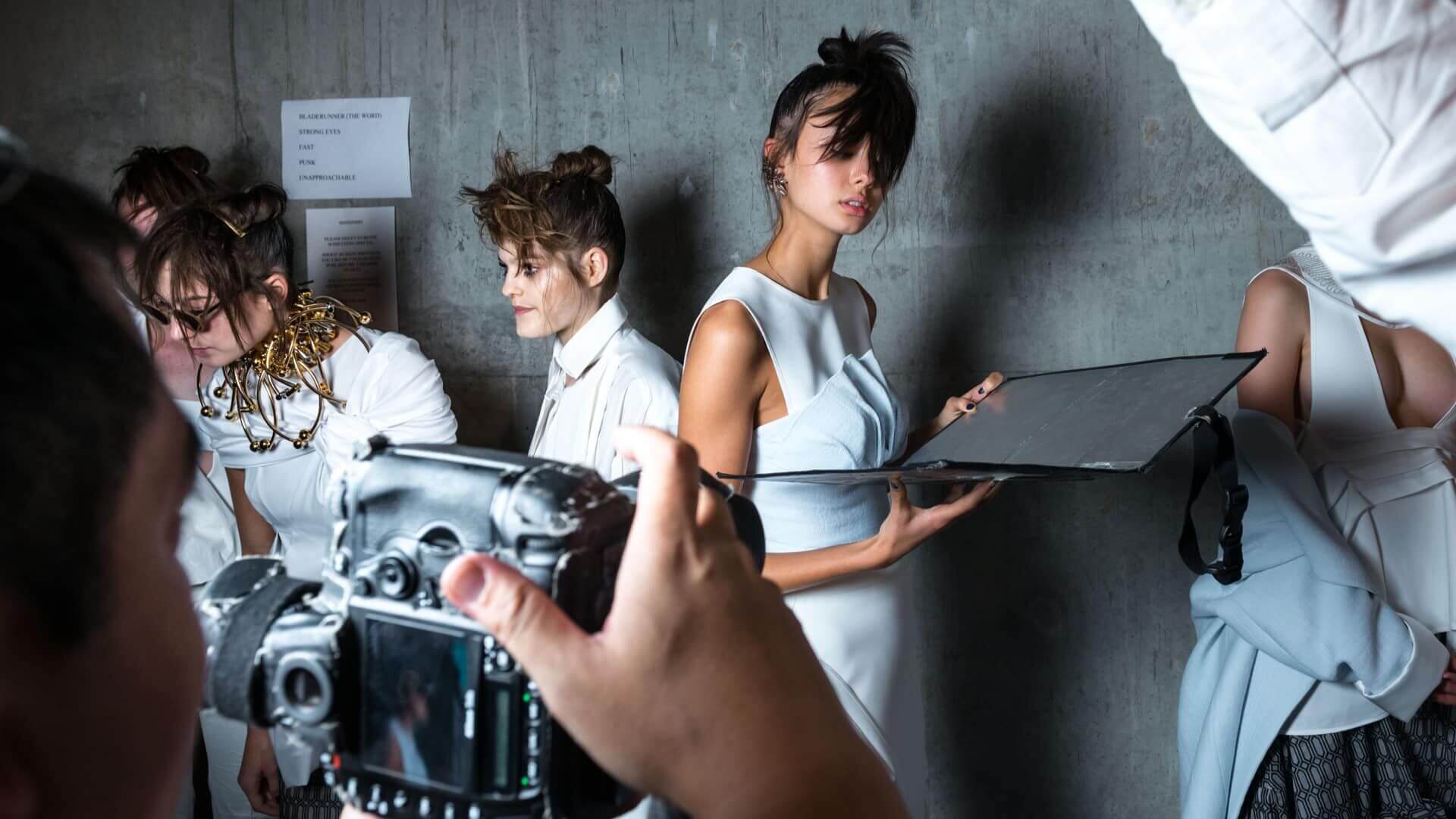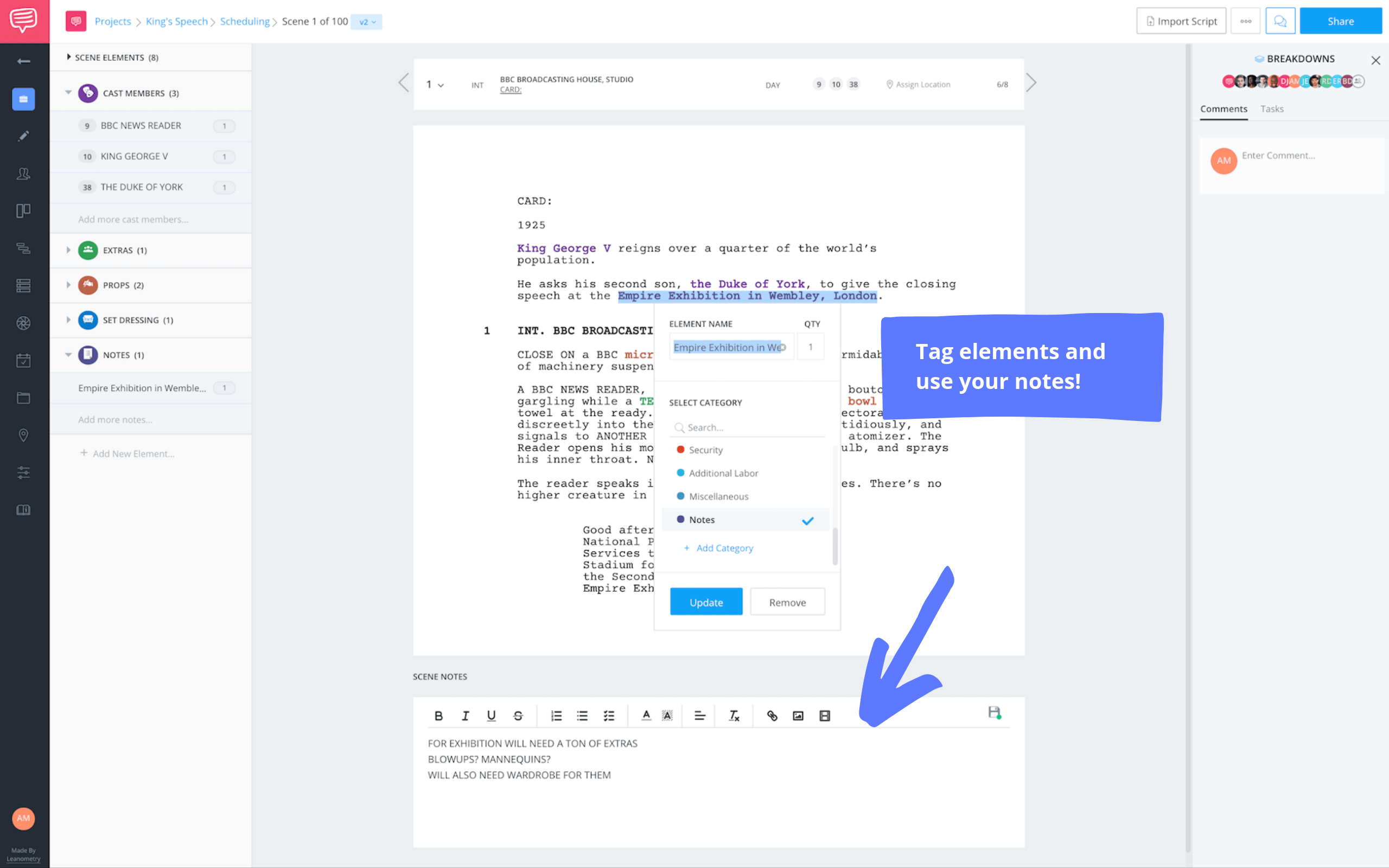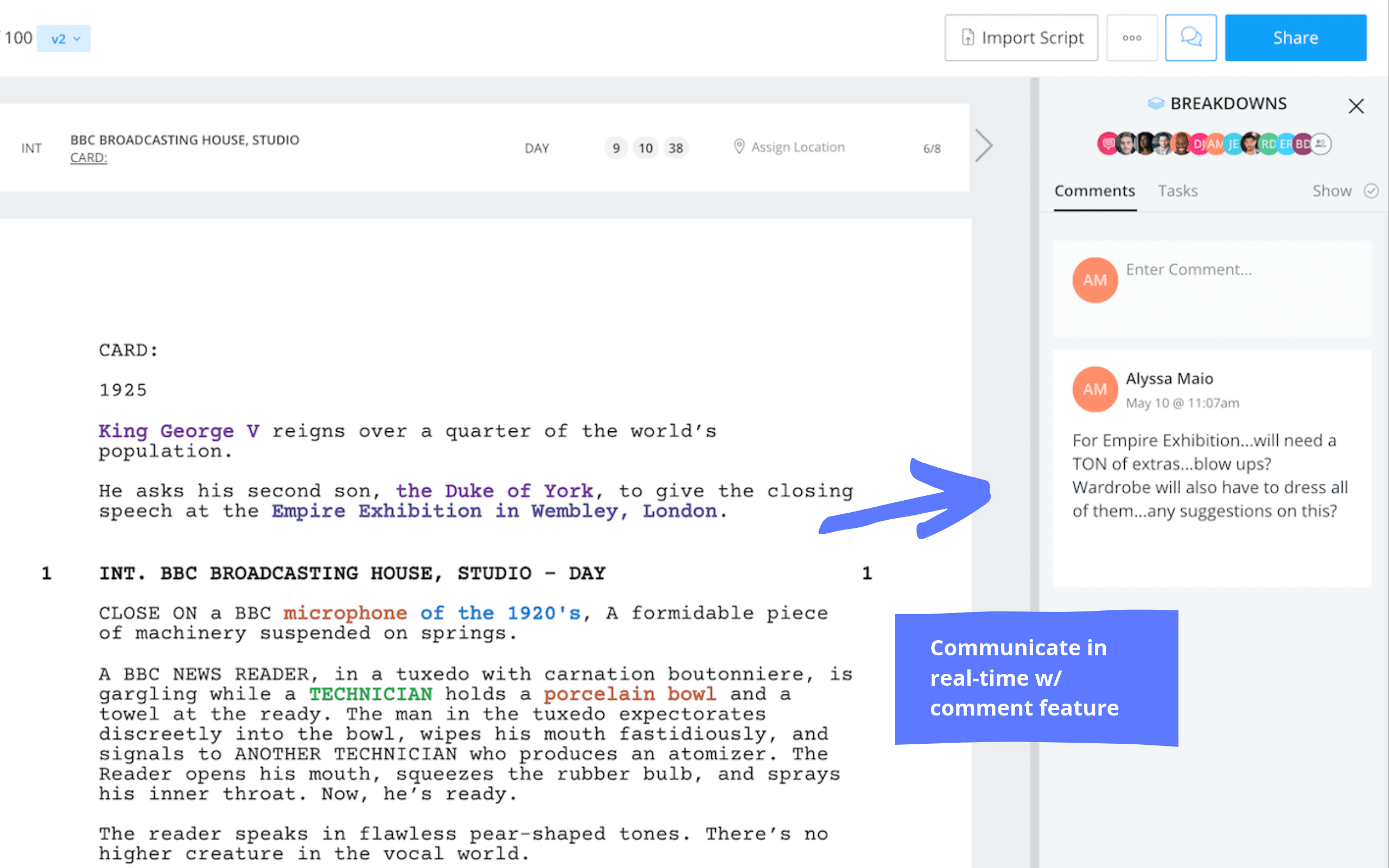Background talent has been a staple of the movie industry since the early days of filmmaking. The need for background continues today on sets in Hollywood. But now, union rates and minimum wage laws means that it’s costly to use a cast of thousands, even when the project calls for just that. But producer’s on a budget and indie filmmakers don’t have to reign in the scope of their imagination or productions.
The film industry has evolved to find a way to satisfy the need for crowds in some clever and cutting-edge ways. Now, the savvy producer can multiply a crowd without necessarily multiplying the budget. Our topic today will show any filmmaker how to hack your background talent needs like the professionals do.
Table of Contents
Everything you need to know about line producers.
1
A Hollywood Education
A Cast of Thousands
Education in Casting
Be open to new tricks
One of the best parts about Hollywood is the unexpected education you get from the strangest of places.
Way back when I was a Hollywood newbie, pounding the pavement for commercial acting gigs, I got a call that I had booked a job for Captain Morgan’s Spiced Rum. Little did I know I would receive an education in casting.
More specifically, I got an education in background casting.

The billboard for Captain Morgan’s with a 4000 Extras
As an actor, I couldn’t believe my luck that I got a job based on my physical similarity to a soccer player. I am not a jock. I hadn’t played soccer or any other team sport in at least a decade. But I guess the years of tennis and ballet, in high school and college, had left my physique photo-ready.
I showed up at the Home Depot Stadium, now the StubHub Center, and milled about crafty until the 2nd Assistant Director came over and ushered me to a holding area. The other talent, seven of us in total, trickled in.
There was another group filing into the stadium. They weren’t obvious athletes. Their numbers included women, and some older, very average looking people. We could tell they were background talent right away as they were corralled away. They were being quarantined in the stands of the huge stadium. But, either there were hordes of extras who were late, or the shoot was going to be lacking in ambiance for the shoot.
Moments later, we were joined by the costume supervisor. We wore identical costumes with only our jersey and short numbers being different. We walked out onto the field and hovered near craft services while the crew set up for the shots.
While we were in the midst of biz-speak with each other, the 1st Assistant Director and a team of six production assistants were huddling a few hundred feet away. We thought nothing of it and proceeded back to the makeup trailer.
We emerged about thirty minutes later back onto the field. The standard 8x8 and 12x12 were already set up.
About twenty background actors were over in a corner of the stadium. In the stands, I saw the PA brotherhood walking through the bleachers. Also in the stands, people were seated...weirdly still.
One of the other talents pointed in the general direction, “Are those mannequins?”
The 1st AD walked over to us at just that moment.
“Sort of, “ he replied. They’re dummies. The PA brotherhood had carefully placed the “dummie” extras.
The production team then placed the extras at very specific places in the stadium and moved them several times and took great care not to have any extra movement from the camera. I later learned that this is called “tiling” and it is a far cheaper alternative to hiring, feeding and collecting actor release forms for loads of extras.
A loss for Central Casting and a gain for filmmakers all over the world.
DID YOU KNOW?
Tiling is the process of digital compositing and superimposition of figures to multiply the perceived number. In practice this filmmaking technique, a subject or group of subjects is photographed from a specific and measured point, moved to another point, re-arranged, and photographed again. The images are then layered digitally to produce one image that appears to show a larger crowd.The rest of the talent including myself then shot our part with the crowd in the background moving. They treated the “dummies” as they did the background and moved them to very specific spots.
If you're planning on saving some extra cash with this technique, that's great! Absolutely no shame in it. But, just make sure you highlight this in the script breakdown so you're prepared come shoot day.
When you highlight and tag "extras" in StudioBinder's script breakdown, you can make a note in "scene notes" down below, noting that those extras will be replaced by mannequins or blow ups. You can even tag "notes" instead of "extras," so your crew knows to pay attention to the notes below. We highlighted the 'Empire Exhibition' in the King's Speech to demonstrate:
You could even tag those specific extras as "props," if it's clearer to you and the rest of your team. At that point, it comes down to preference, but StudioBinder makes it simple to do whatever is most comfortable in the most efficient way.
In the finished shot, it’s nearly impossible to tell if you don’t know what to look for. Ultimately, for the Captain Morgan’s background, it was a combination of tiling extras and “mannequins” that gave the desired effect.
2
Get Central Casting on the Line
The Importance of Background Talent
2.1 A HISTORY OF CENTRAL CASTING
Get a cast of thousands
Since 1925, Central Casting has provided future movie stars, like Clark Gable, Jean Harlow, and Gary Cooper, with their first on-screen gigs for pay.
It is one of the first stops for new actors looking to get their feet wet on a set. Even modern film stars like Brad Pitt started in background work.
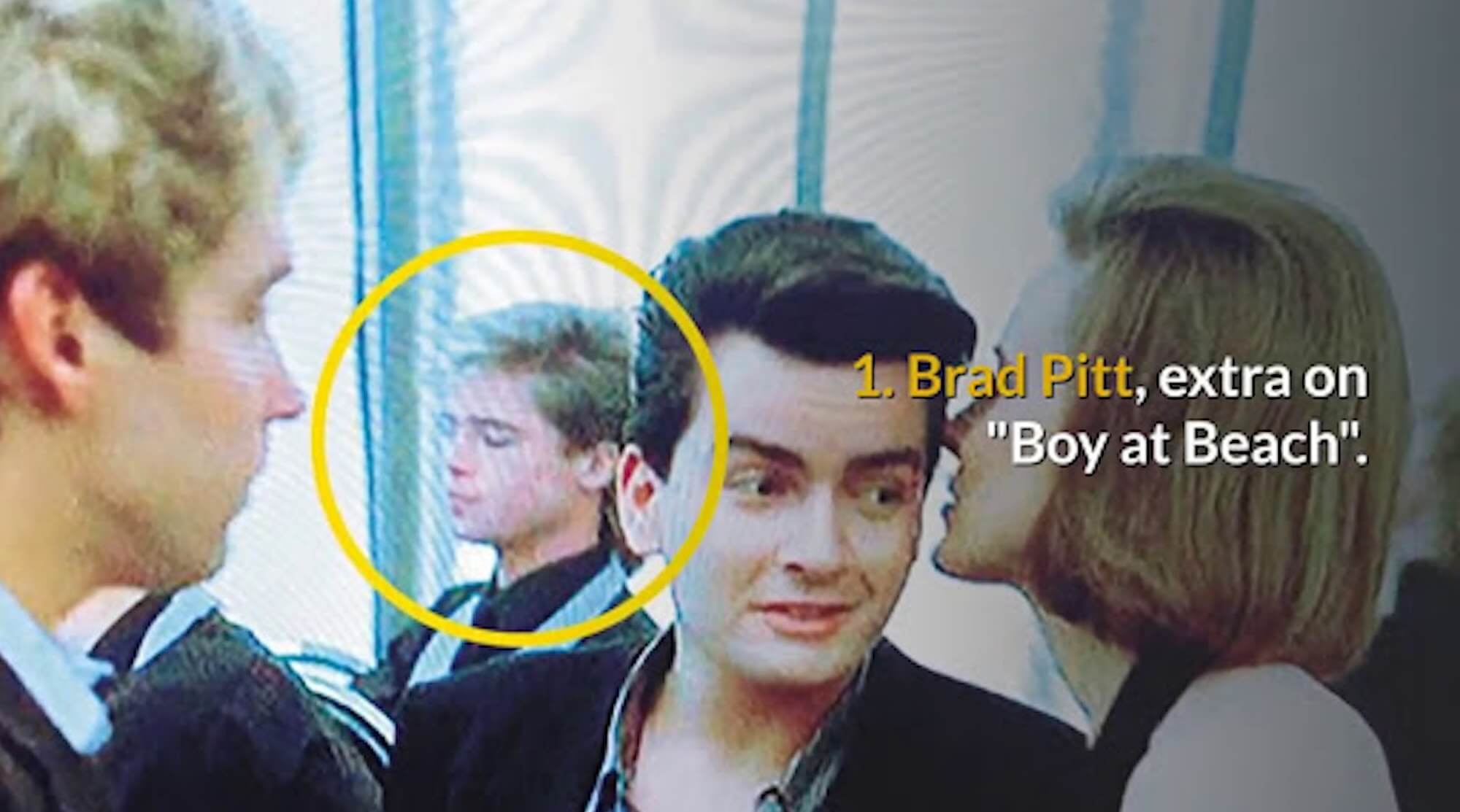
Pitt was a background player in the days before Thelma and Louise made him a star
In fact, Central Casting was established with the goals of “getting rid of fees to employment agencies, regulate who could do the work, and to reward those who were experienced and qualified.”
Central Casting didn’t become a privately owned company until the mid-70s.
In the Golden Era of Hollywood, films such as The Ten Commandments employed more than 14,000 extras throughout the filming. Other films, such as Hello, Dolly! continued the tradition of the near-epic cast of thousands.
This tradition, even for large-scale studio productions like Ben-Hur, was simply not feasible in a profit-driven industry.
2.2 AN OLD SOLUTION TO A MODERN PROBLEM
Do what they did in the golden days
George Melies and Buster Keaton, two early film pioneers, experimented with the idea of compositing and superimposition to achieve effects that were built upon much later.
Compositing DEFINITION
What is compositing?
Compositing is the combining of visual elements from separate sources into single images, often to create the illusion that all those elements are parts of the same scene. Live-action shooting for compositing is variously called "chroma key", "blue screen", "green screen" and other names.
Superimposition is the placement of one thing over another, typically so that both are still evident.
Within 25 years, the film industry made leaps and bounds in visual effects. One of the solutions to the headache of large-scale crowd scenes in the early days of Hollywood, was matte painting.
The legendary film, Ben-Hur, is a shining example.
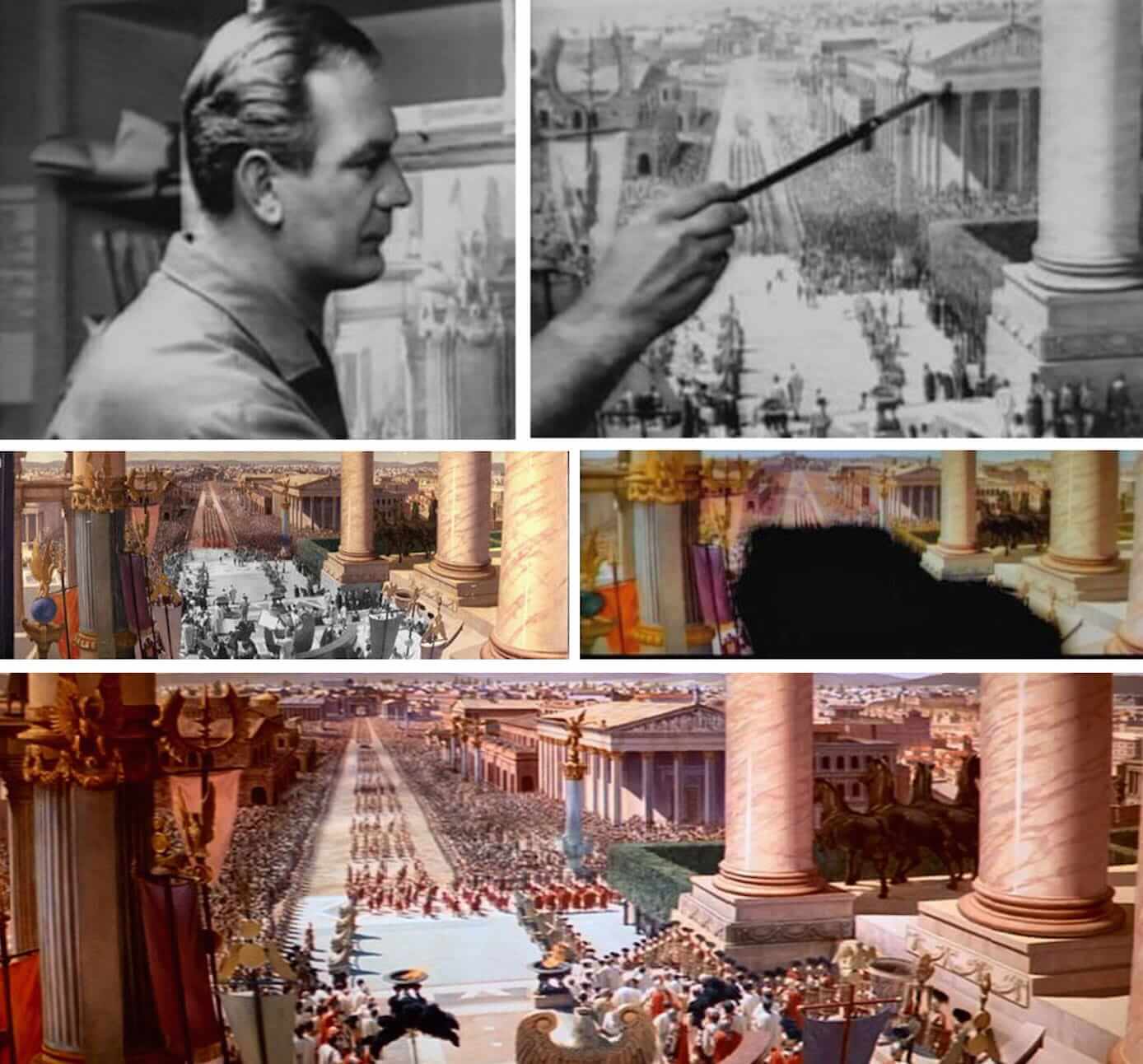
Nearly all of the film had painted-in spaces and extras
Though this masterpiece still employed more than 15,000 background talent, the filmmakers still needed something more to bring the glory of ancient Rome to life. Matte painting had been used in scenic displays. In fact, the superimposition and compositing had brought landscapes and architecture to life in other films. But in Ben-Hur, it was used to populate those locales.
Matte Painting in Film Definition
what is Matte Painting In Film?
A matte painting is a painted representation of a landscape, set, or distant location that allows filmmakers to create the illusion of an environment that is not present at the filming location.
Matte painting started with still photography, but they evolved from painted glass to 3D digital universes. This painting is also used to paint people. Why hire and feed hundreds of actors when you can get some of the best artists in the business to paint them?
Matte painting is still a popular way to achieve a large crowd on screen. Just ask George Lucas who enlisted artist Chris Evans to recreate hundreds of background stormtroopers.
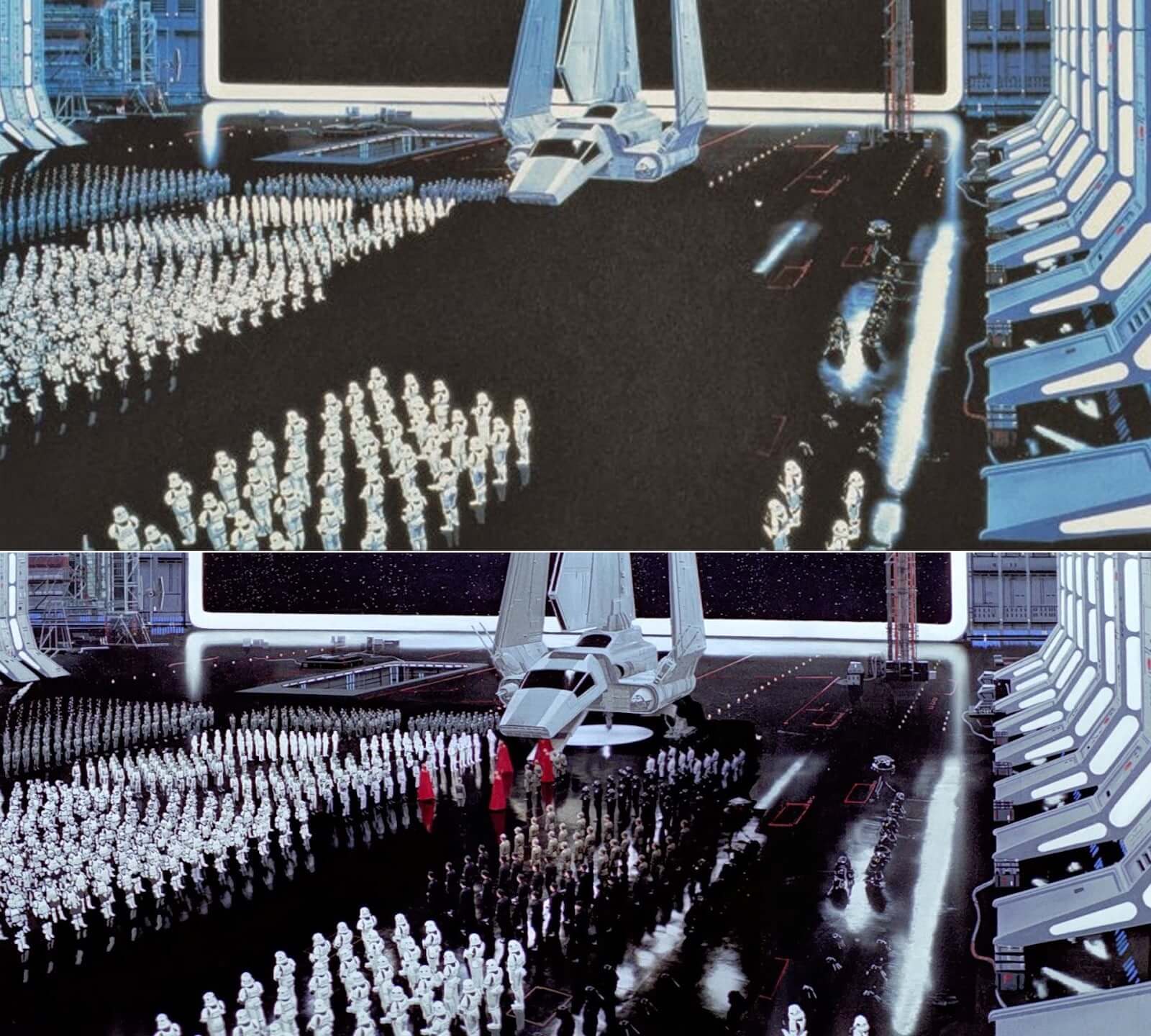
Artist Chris Evans painted hundreds of Storm Troopers
This is where careful storyboarding and shot listing not only come in handy but become essential in planning a film production. This kind of planning will then inform the breakdown, which will inform the budget.
Knowing how many background talent will be utilized/where painting will come into play, where actual talent will be placed and how the coverage of shots will play out, is crucial to getting the scene in the can. Getting all of this just right will determine how easy it will be for your editor later. Which ultimately, will determine how well the film comes out.
Having a production management software in place at the development and production phase is essential. From script breakdowns to shot listing, scheduling to keeping track of your talent, you will want to cover the heavy logistical planning involved to achieve a cinematic shot, even on a production that takes you out of this world.
Related Posts
2.3 A MODERN SOLUTION TO AN OLD PROBLEM
Make your background pay you
A Star Is Born is one of the most successful films in recent years. I saw the film and was impressed with the production as much as the story and the stars that brought the film to life.
Watching from a producer’s point of view, all I could think was how much did the extras cost in a film filled with stadium-sized crowds?
SAG Background Talent can be really expensive especially if you need 10,000 of them. Did Central Casting really have 10,000 people ready to call up?
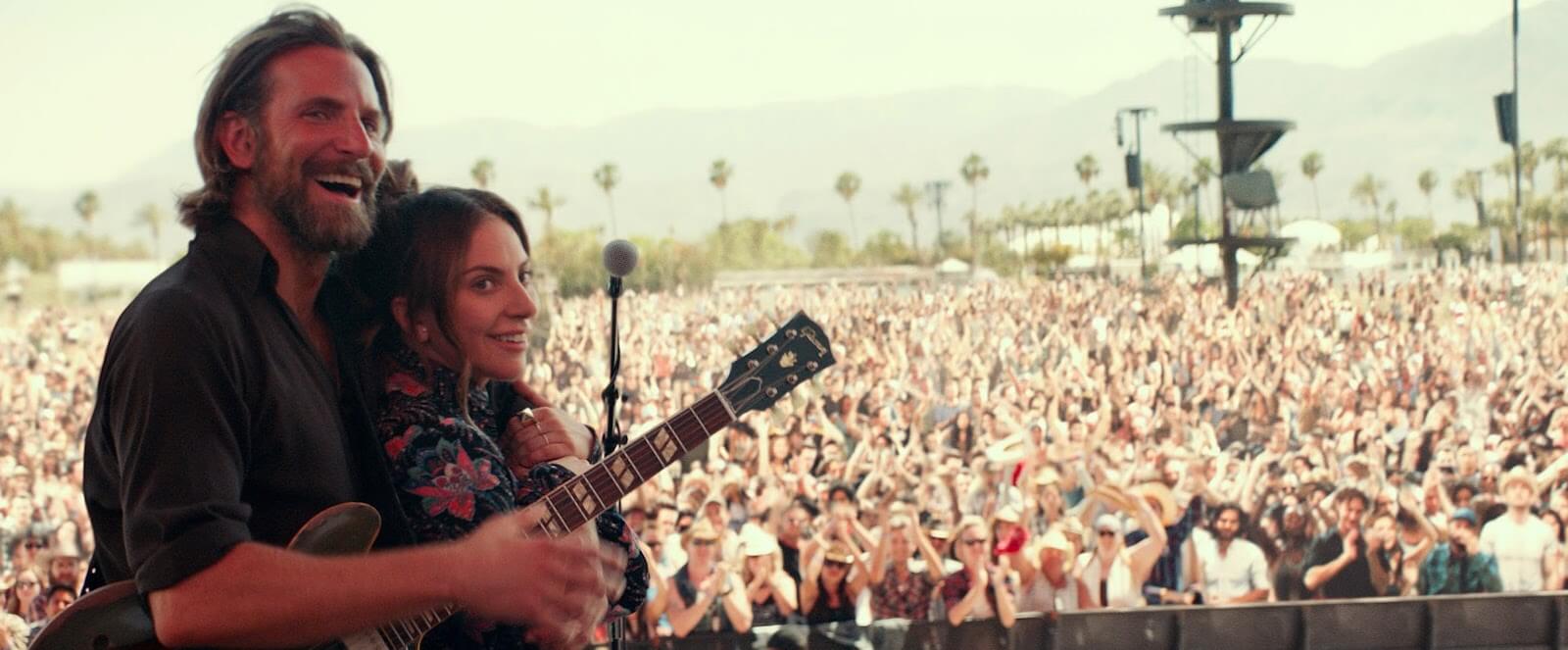
A producer was born at the Hollywood Bowl?
Director and star, Bradley Cooper took advantage of already planned concerts to fill his audiences.
The actor actually sang in front of audiences at the Coachella and Glastonbury Music Festivals, respectively. He also used the fan appeal of his leading lady, Lady Gaga, who gave a real concert for her fans who paid to see her perform and support the project.
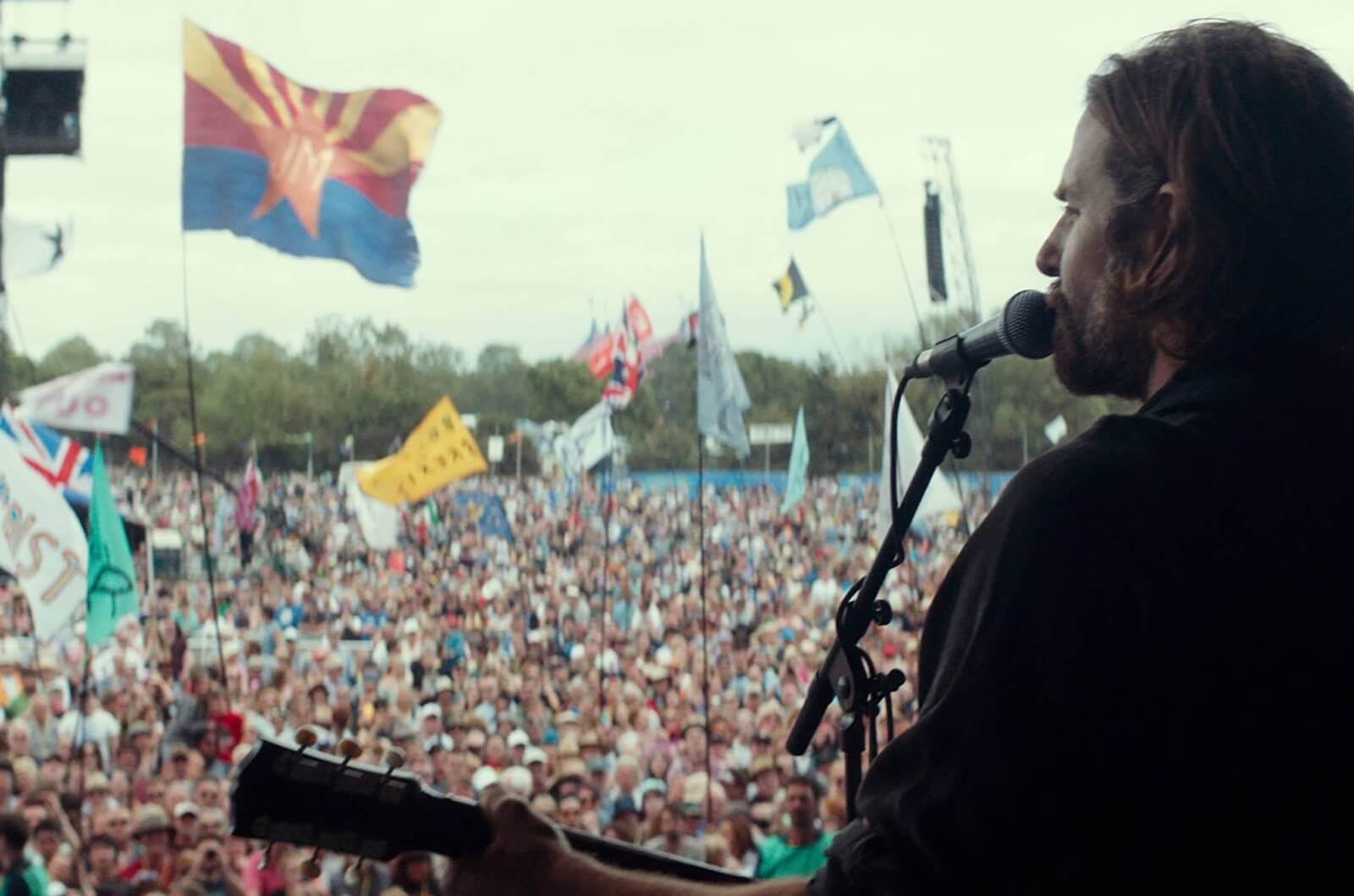
The Glastonbury Festival provided 100,000 background talent
But what does a producer do when they don’t have the star appeal of the former People’s Sexiest Man Alive?
3
Necessity is the Mother of Invention
How Hollywood Solves a Problem
3.1 MANNEQUINS, VOLUNTEERS, AND CUT OUTS, OH MY!
Use background by another name
When Academy Award-winning director Sir Richard Attenborough shot the 1983 Best Picture, Gandhi, he wanted to create the most realistic visual representation of the funeral of the near god-like, Indian pacifist, Mohandas Gandhi.
He had very carefully scheduled the shoot to take place on the anniversary of Gandhi’s assassination. Nearly 300,000 volunteers were enlisted to recreate the solemn scene. The film still holds the record in Guinness Book Of World Records for the number of extras used for a film.
Background talent will always be needed, but the extra crew, meals and holding requirements that a cast of thousand requires limits what independent filmmakers can afford.
To solve the problem, there have been pretty basic attempts to reign in the cost of background.
Mannequins in masks is a solution that became popular. Even though they are heavy and unwieldy, you don’t have to feed or pay them. Transportation and setup of these still do take some crew. Also, the storage is a hassle.
Cardboard cutouts are another alternative. They are light and easy to store, but as they are practically 2-dimensional on film, they are not suited for anything closer than medium shots or moving cameras.
Related Posts
3.2 INFLATE YOUR BACKGROUND
Blow up the extras, not the budget
Many films have used inflatable “extras” as well, and audiences have never been the wiser. Some films that have used inflatable backgrounds include The King’s Speech (2010) and The Fighter (2010).
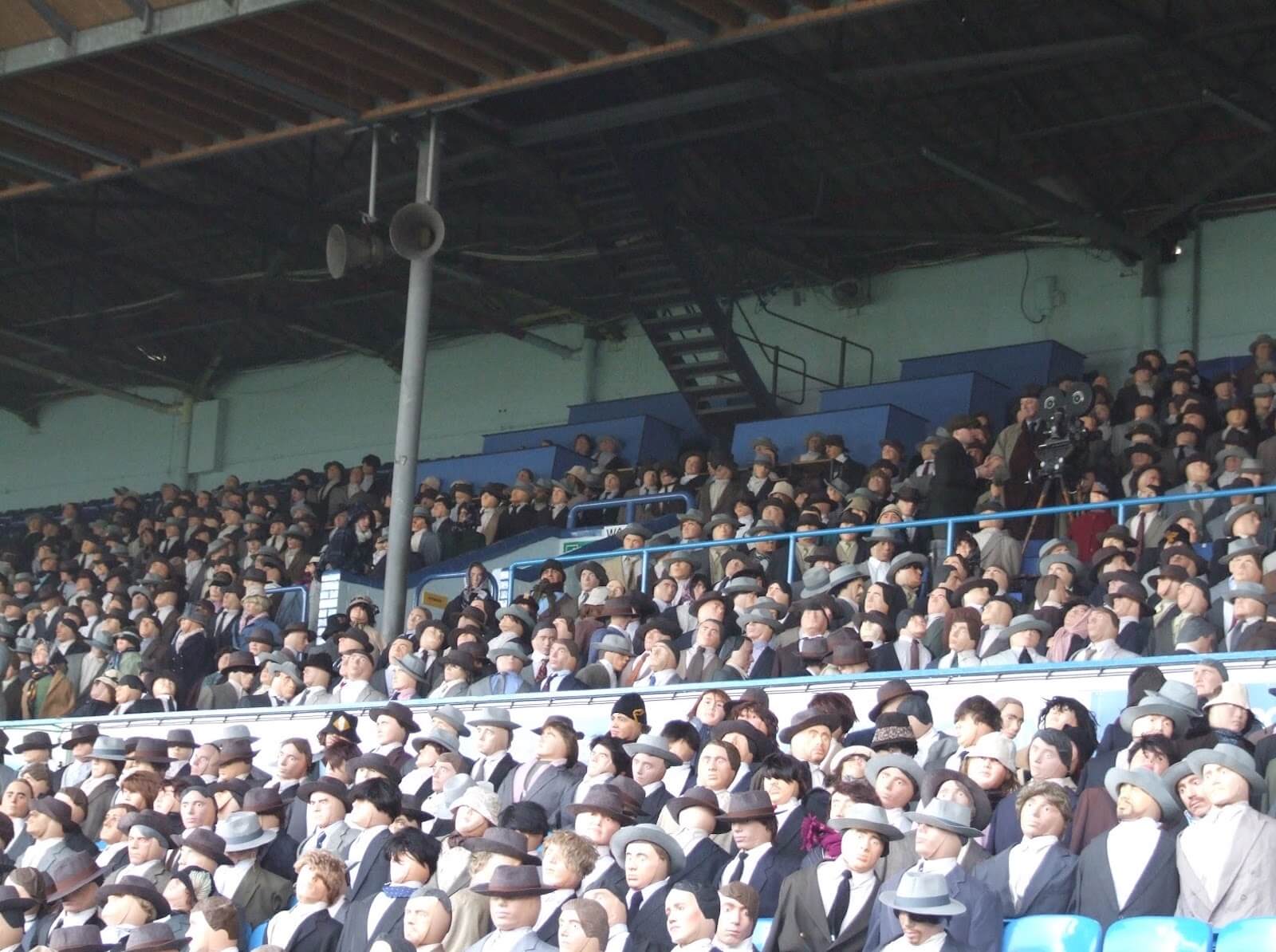
The King’s Speech wasn’t heard by living breathing extras
The inflatables, like the dummies, thicken the crowd more realistically than computer-generated crowds. In other words, directors are able to trust the final outcome of the “extras” before post-production.

These “extras” won’t cost a penny to feed
The inflatable extras were first used on the film Seabiscuit (2003). They were created specifically for the film and now they have swiftly become a staple.
In The King’s Speech, production dressed the inflatables in period-specific costumes like the rest of the cast and the difference is…
King George VI was speaking to literal airheads
The crew dressed the dummies in period-appropriate clothing and gave them realistic (enough) looking faces. It was a great solution for crowds in a theater or stadium audiences.
Those crowds are often stationary and appear as part of the backdrop. But as we now know, planning them in the script breakdown is essential. Use the comment feature to communicate with your team in real-time.
If the cinematography is done well, the foreground action dominates the audience’s attention. Most of the time, viewers are none the wiser to the fake crowd in the background.
Related Posts
3.3 DIGITAL EXTRAS
Make your background massive
The 1996 film, Braveheart, did an amazing job of digital compositing and perfected the cutting edge use of “tiling.”
The production team hired 1500 members of the Irish Defence Forces to recreate the Battle of Stirling.
The notorious first Battle for Scottish Independence actually required more than ten times that number for a realistic recreation.
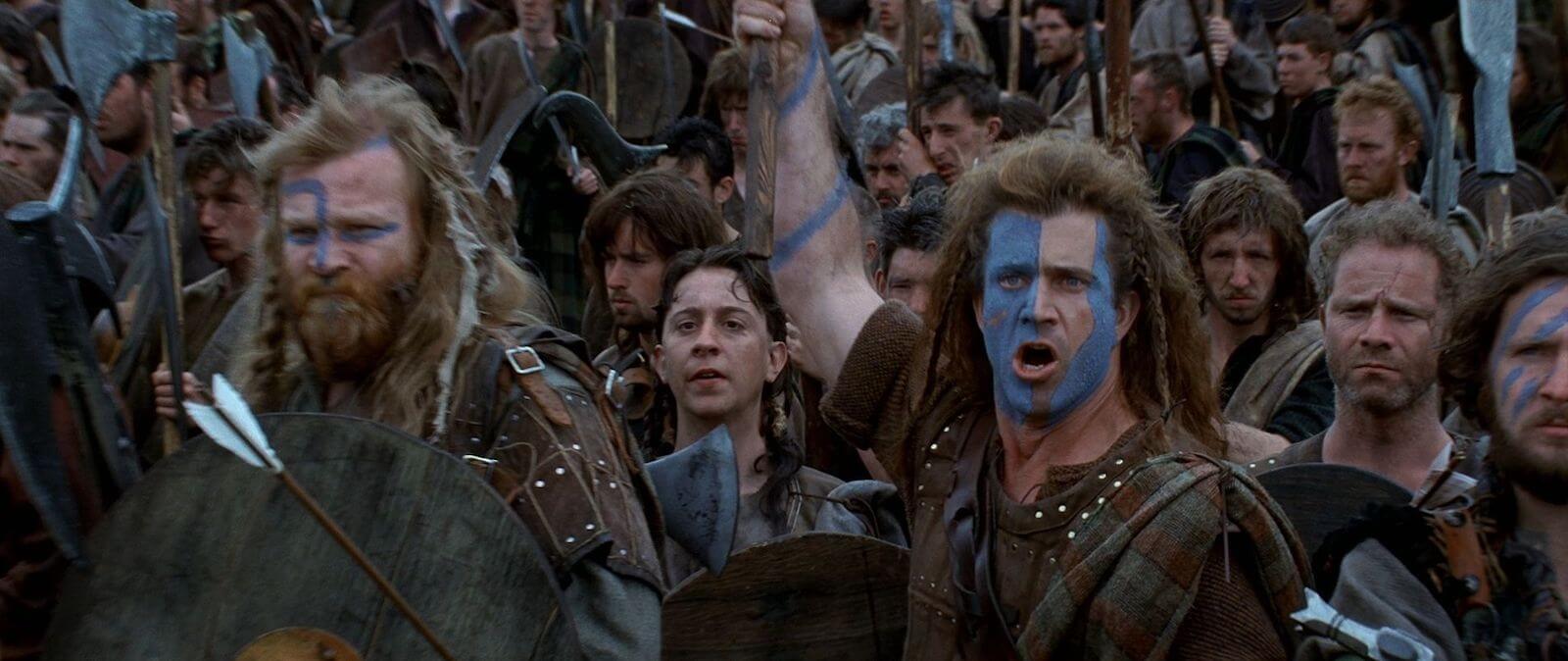
They may take away our lives, but they'll never take our background!
With only 1500 men, Gibson had them portray both sides of the battle, and made use of cutting-edge visual effects.
Gibson staged the actors in one place, shot their actions and then moved them to another part of the field and shot there. The images were later composited in post-production to give an awe-inspiring and cinematic battle.
The scene of a medieval battle was so realistic that the Motion Picture Association of America threatened to give the film an NC-17 rating.
Mel Gibson was not the first to use the practice of digital tiling to create massive crowds, but he did manage to do it flawlessly.
A few years later, director Ridley Scott used the same method on the production of Gladiator. The director brought several epic battles and the glory of ancient Rome to life.
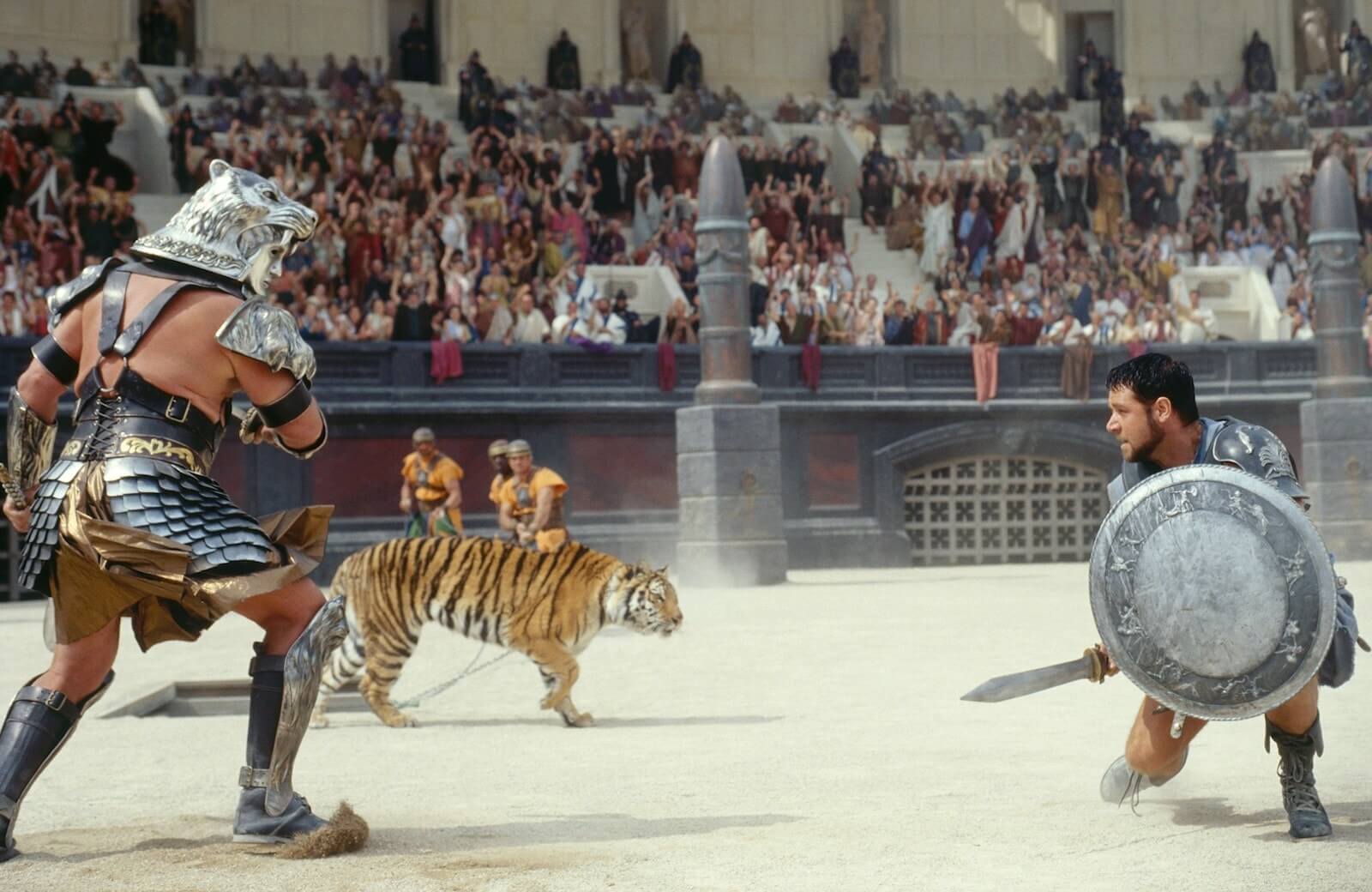
Background, what we do on camera echoes in theaters!
But it is Gandhi’s record number of extras that will more than likely stand the test of time thanks in large part to director Peter Jackson and his Lord of the Rings Trilogy.
Even though Jackson hired more than 20,000 extras for The Fellowship of the Ring, he needed the battle scenes to appear even larger than he could ever hope to cast. Jackson hired pioneering visual effects engineer Stephen Regelous to write and create a program that would make the task of replicating giant battle scenes. Regelous came up with the program MASSIVE.
MASSIVE Definition
WHAT IS MASSIVE?
MASSIVE is a visual effects software used to quickly and inexpensively bring to life large crowd scenes. The program creates thousands of individual agents that act independently. It has eliminated the need for individual programming and animation of the agents and has lowered the cost of creating scenes with thousands of agents.
The program built upon previous techniques such as motion-capture, 3-D Animation and compositing and such principles of maths as fuzzy logic.The hallmark feature of the program is the ability to create huge crowd scenes quickly and cheaply.
The program worked so well that Regelous received an Oscar from the Academy of Motion Pictures Arts and Sciences for his work.
‘Now, that the software is a decade old, it is a reasonable consideration for any filmmaking budget if there is a need for crowds.
UP NEXT
The Ultimate Guide to Auditions
The difference between background and talent is in the audition. Knowing how to effectively screen and read your talent can make or break your production. In the next article, we’ll show you the most important steps to take so that you cast right for your next film.
Easily create script breakdown sheets online.
Import scripts. Tag elements like props, wardrobe, and cast. Create breakdown summaries and DOOD reports in a snap.
